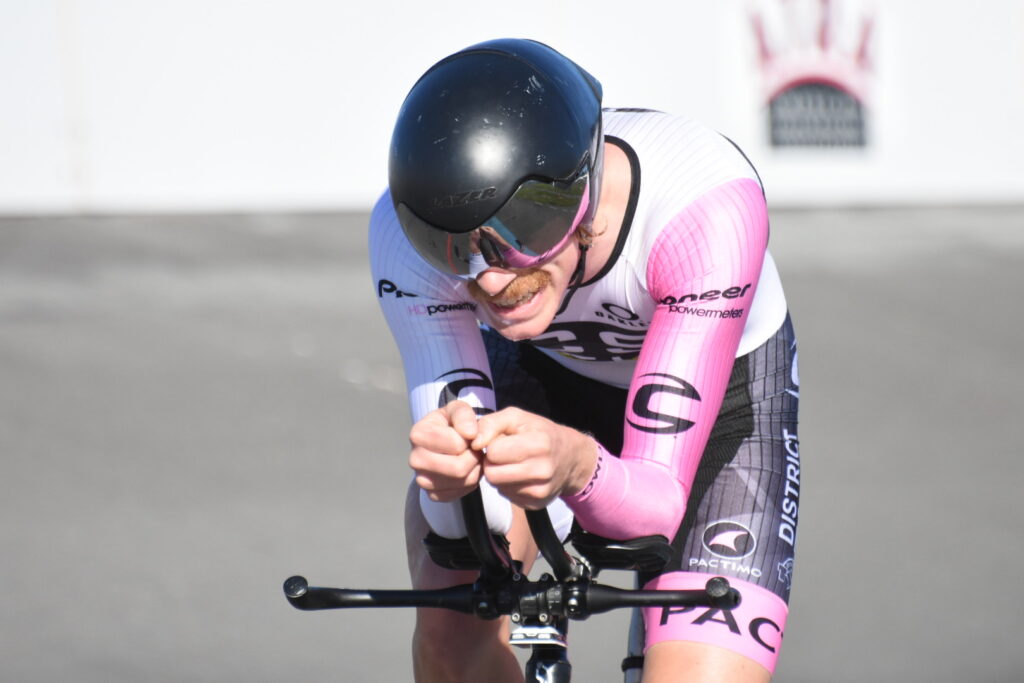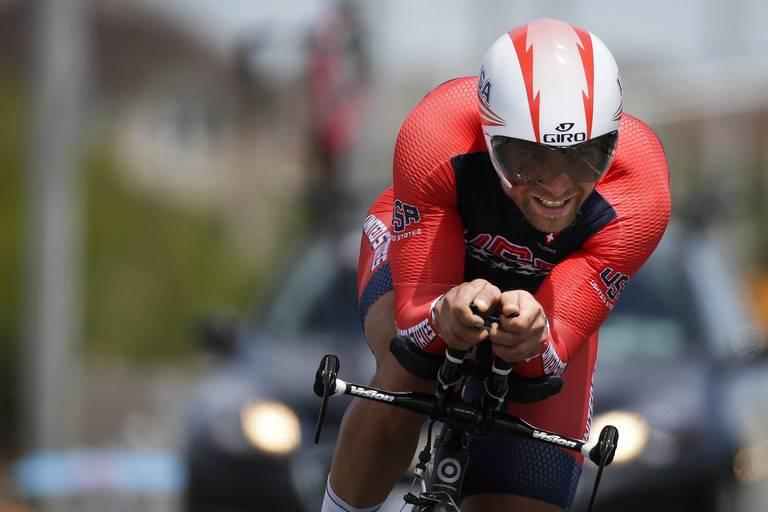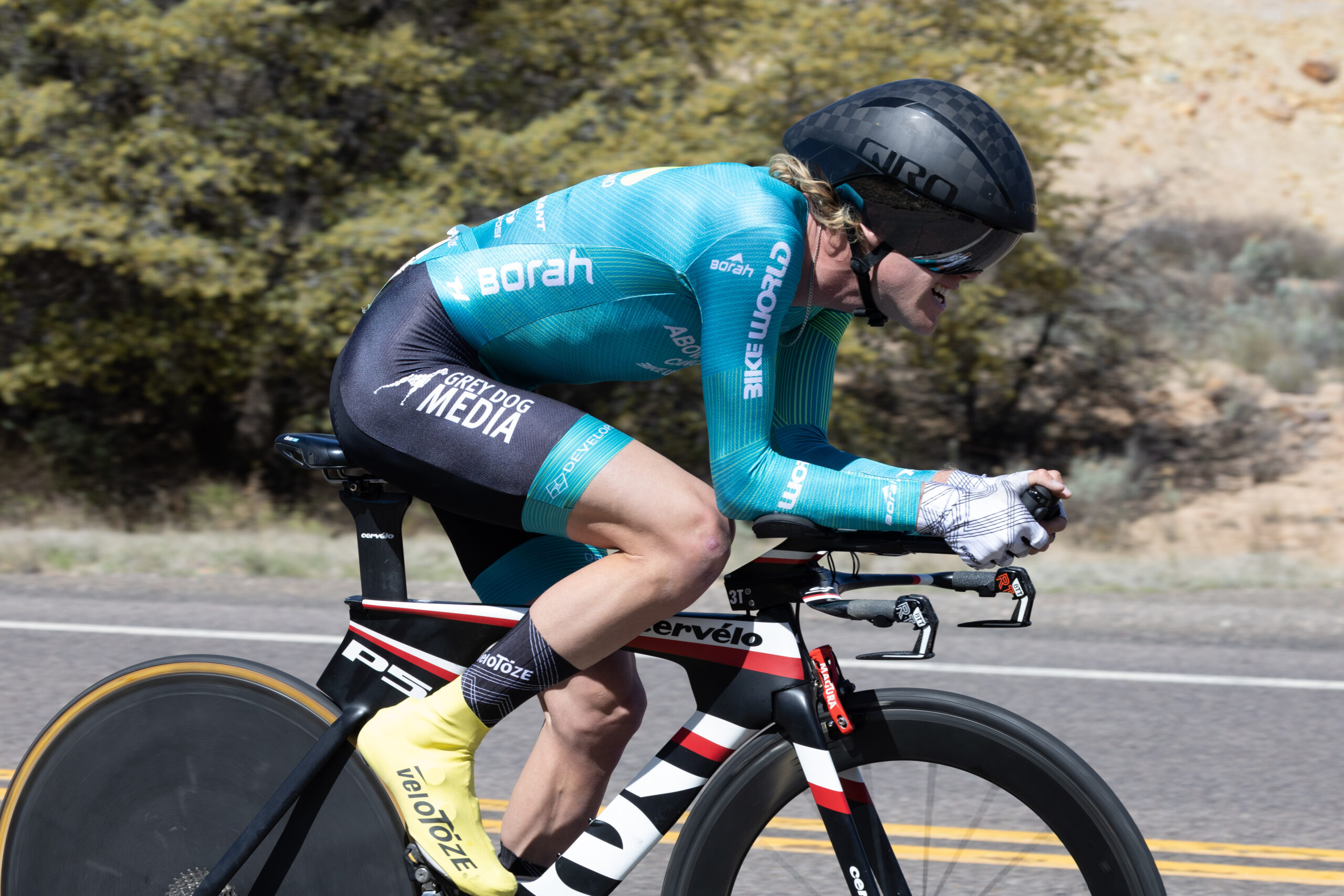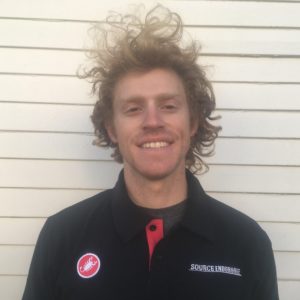How to PR the Fiesta Island Time Trial

When it comes to the Fiesta Island Time Trial (FITT), everyone’s goal is to go faster. Time trialing is as much an art as it is a science. In this article, I want to focus primarily on the technical details of time trialing that maybe aren’t necessarily fitness related, because it is common knowledge that you have a higher chance of a PR if your fitness or FTP is higher, but I mainly want to delve into the controllables of want you can do to improve your time that isn’t necessarily fitness related.
Your Training Week Prior to the Fiesta Island Time Trial
The Fiesta Island Time Trial is a great event to gauge your training progress throughout the season. It’s a simple way to check whether your power at threshold has gone up or if you have made improvements to your aerodynamics. The Fiesta Island Time Trial schedule is: February 25th, April 13th, May 12th and September 29th. This is a great spread of dates to work towards a progression throughout the year. Use the first Fiesta Island Time Trial in February to set a baseline for both speed and power and use the subsequent dates to try and better your time.
To get the best gauge of your current fitness level and to aim to achieve your personal best time, the week leading up to the Fiesta Island Time Trial should be restful, allowing yourself to come into race day fairly fresh. This is going to look different for everybody, but shedding fatigue should be the general theme. This might look like more recovery days throughout the week and potentially 1x day of intensity towards the beginning of the week. Practice openers the day before the Fiesta Island Time Trial. This might look like a shorter endurance ride with a handful of efforts close to threshold. The objective of an opener ride is to help gauge pacing as well as prime the body for the following day’s effort.
Your Fiesta Island Time Trial Warm-up
Warm-up is often quite individual but it’s important to develop a routine that works for you and primes the body for an all out effort. Some riders feel they need a longer warm up to feel good, others can get away with something pretty minimal. It is work experimenting as to which camp you fall in, and work on executing a routine that you can rely on getting you to the start line ready to race.
I typically incorporate a fairly short warm up for a time trial, usually consisting of 10-20 minutes of endurance riding with 2x3 minute efforts at race pace, feeling out pacing by what effort feels sustainable. There should be intensity in the warmup but not necessarily any fatigue build up, no need to work too hard. Spin ups are good as well to prime the body’s neuromuscular system without creating much fatigue. Try this in a smaller gear, in the saddle, trying to hit the highest cadence you can in a 15 second window. 2-3 of these spin ups is sufficient.
Ideally you are able to time the finish of your warm up within 5 minutes of your start time. The more time that passes beyond this 5 minute mark, the more ineffective your warmup becomes.

Speed and Pacing Optimization
My three tips for pacing are: don’t go out too hard, don’t go out too hard and don’t go out too hard. The Fiesta Island Time Trial is the perfect venue to try and negatively split your lap times. My suggestion if you are using power is to ride about 10 watts below your target power for the first lap, this might translate to around .5-1 mph slower than your target pace. The sensations should feel almost too easy and very controlled. Use this first lap to gauge the effort and how your legs feel. Is this a smash it out of the park day or a hang on for dear life day. You’re just not going to simply feel at your best everyday, so pace appropriately and you’ll still achieve the best time you were capable of on the day.
For the 20k, lap one should feel somewhat easy, focusing on your breathing and holding a fast, aerodynamic position. Coming into lap two, start to lift the effort slightly, gauge how that feels to come up on the power. Maybe you end up back to your lap one power, or if the sensations are good, hold here. Coming into the final lap, now is the time to find the limit. This is where the effort level rises from 8/10 up to 9/10 and eventually 10/10 once the finish line is insight. Remember to push all the way through the line, as a deceleration before the finish could cost a few seconds.
Think about the effort after finishing the Fiesta Island Time Trial. Did your warmup feel effective? Was your pacing strategy appropriate? Did you empty the tank at the end? Make sure to log these answers in your training notes. Now you have a baseline effort to work off of for the next Fiesta Island Time Trial. What will you change for next time to set a new personal record?

About the Author
Taylor Warren has raced at the elite level since 2014 and graduated with a Bachelor's Degree in Exercise Physiology from Colorado State University in 2015. Taylor continues to race at the elite level with CS Velo Racing, gaining experience and wisdom to help impart to the athletes he works with. Taylor is also a student of the game, with a passion for human performance and physiology, he is able to combine his race experience with an understanding of how the human body responds to training to deliver the best possible coaching experience. Taylor believes in a practical, holistic approach to coaching and training that values the athlete’s lifestyle and understands how to make the process approachable and enjoyable.

